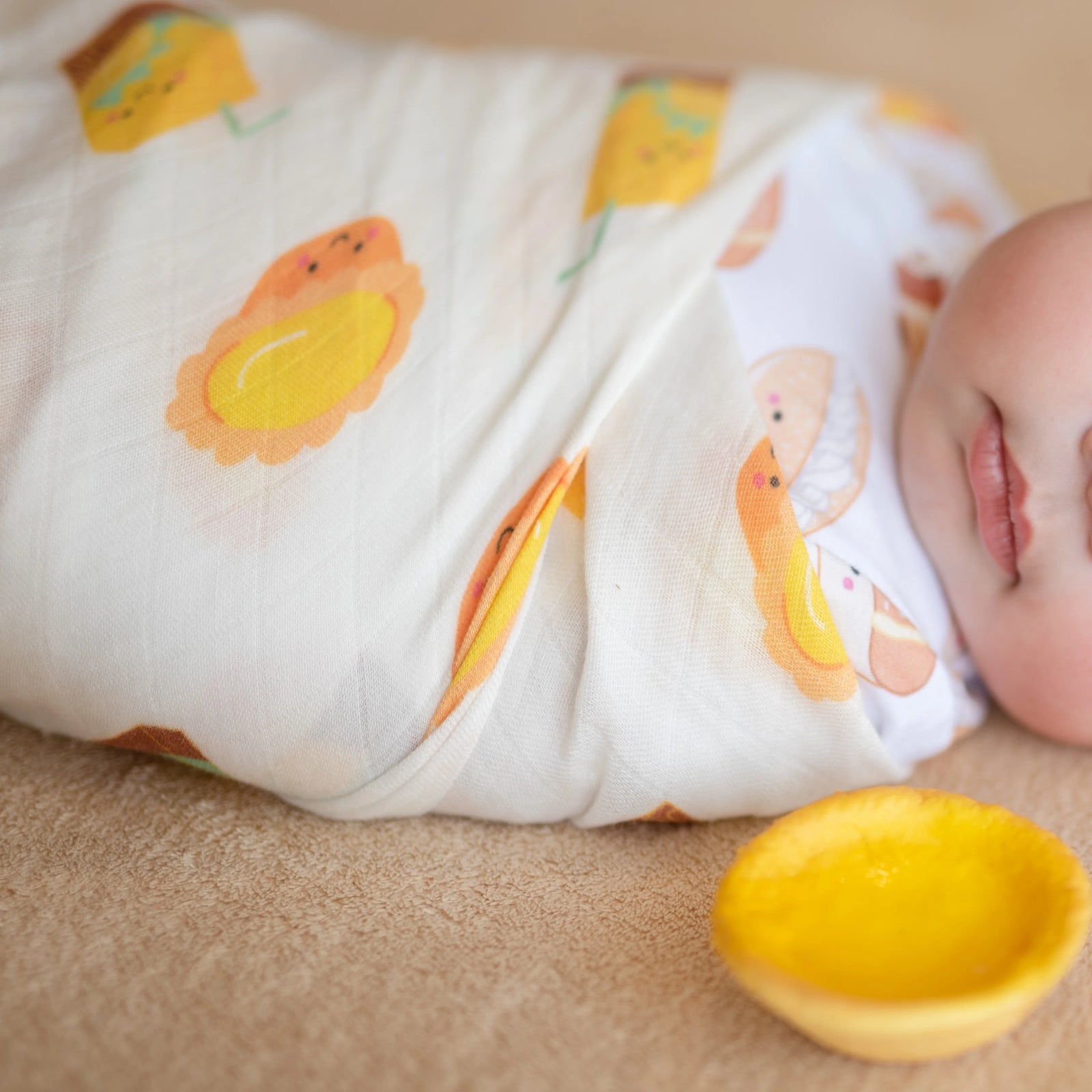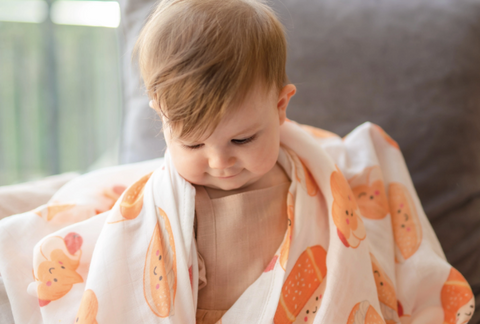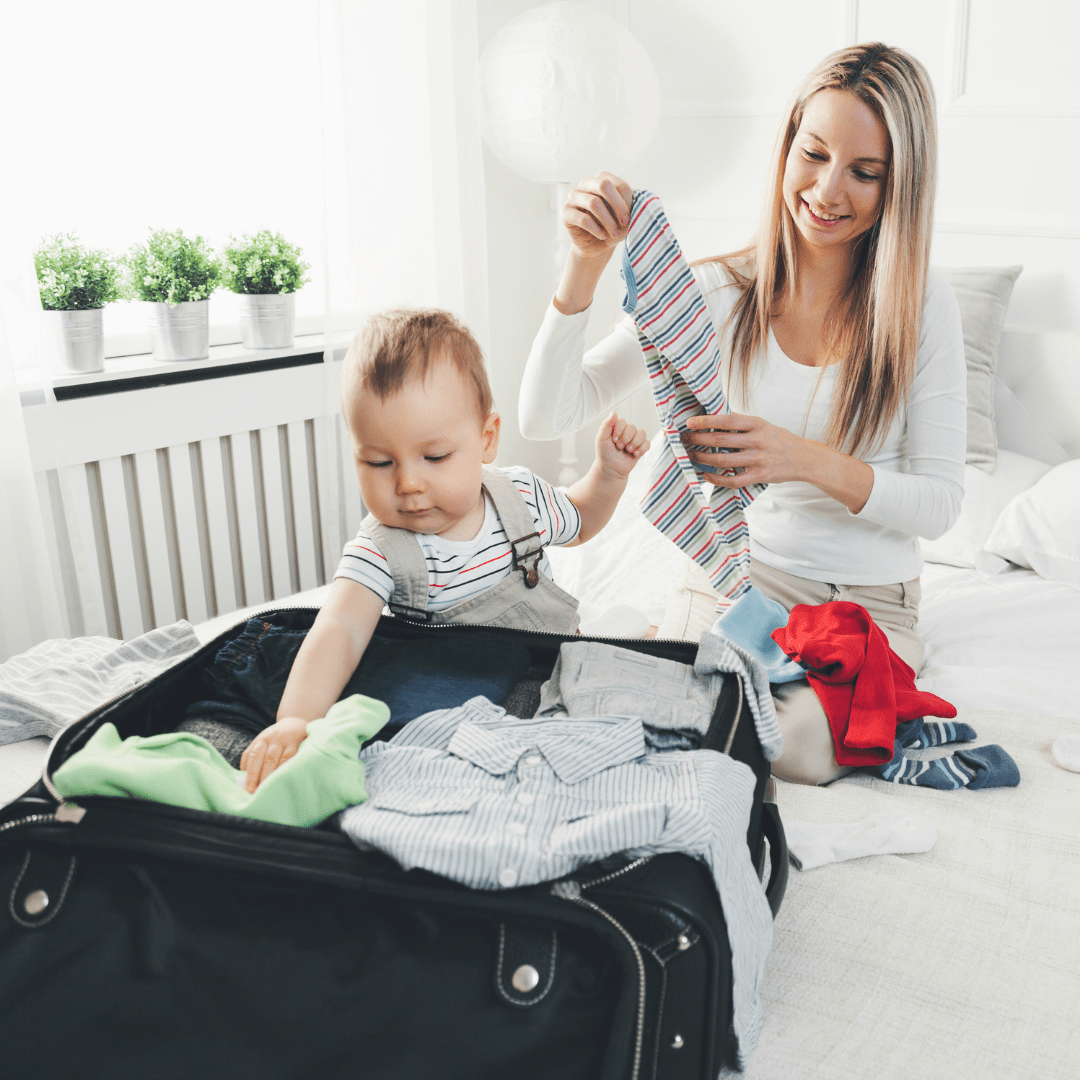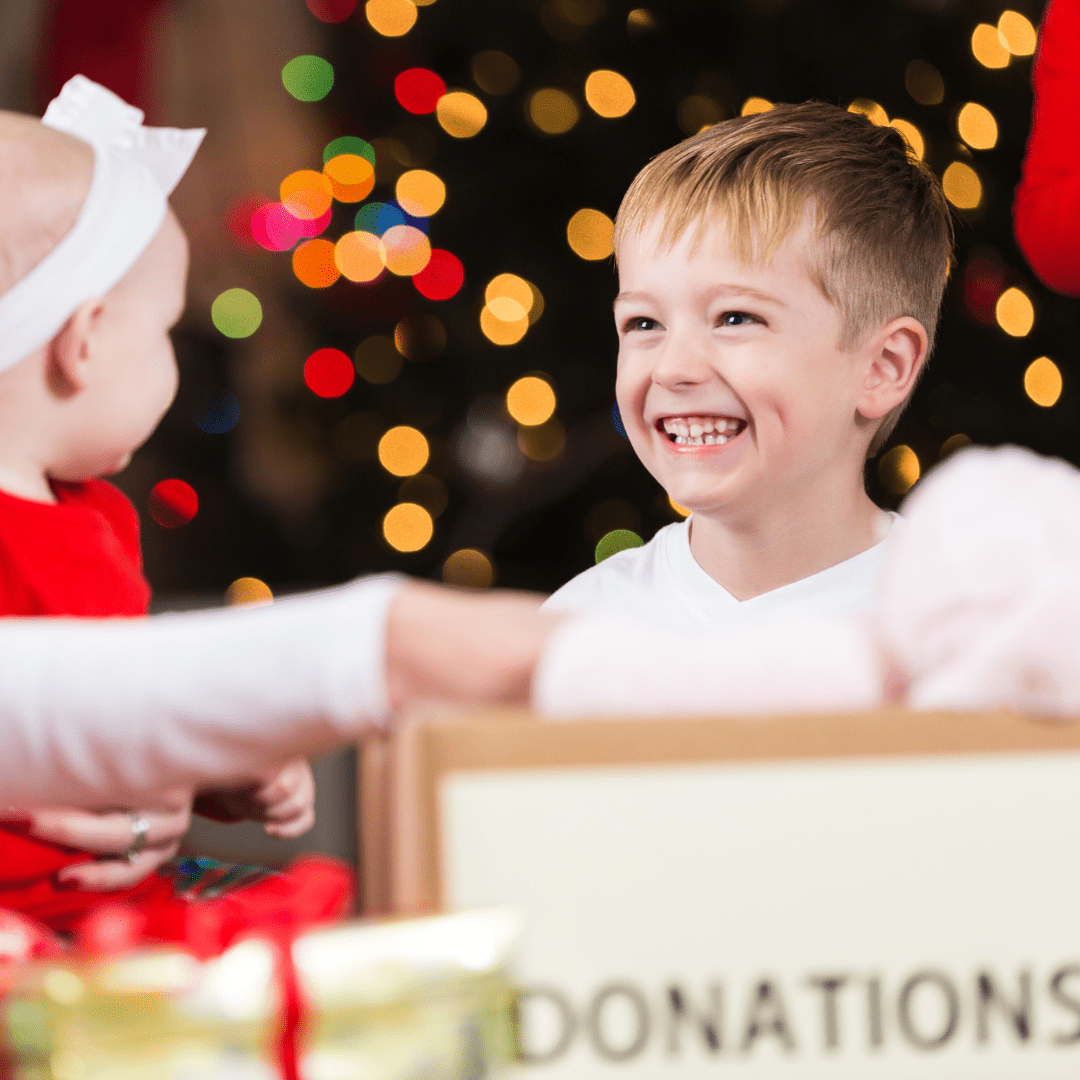Your Cart is Empty
Gift Sets
Categories

Swaddle Smart: Mastering Your Baby's Sleep Routine
by Adrian Ma March 15, 2024 7 min read
Swaddling isn't just adorable; it's a proven method with numerous benefits for newborns. Pediatricians endorse it for soothing babies, improving sleep, and enhancing safety. This guide covers the advantages of swaddling, safe techniques, when to stop, and transitioning out. Whether you're a new parent or refining your skills, ensure your baby's comfort and security with this comprehensive resource.
Benefits of Swaddling
Although some parents joke that swaddling newborns makes them look more like a burrito than a baby, pediatricians and other experts agree that swaddling your newborn offers many benefits.
Swaddling Soothes Your Baby
Even after your baby enters the world, he still needs time to transition to life outside of the womb. During your baby’s fourth trimester, swaddling can help recreate that feeling of warmth and coziness that your baby enjoyed in your womb.

Also, a comforting touch regulates your baby’s temperature, breathing, and heart rate. Unfortunately, it’s impossible to hold your baby during every moment of the day, but swaddling can help mimic a mother’s touch and similarly soothe your baby. In fact, swaddled babies settle more easily and sleep better because they feel comfortable and safe.
Swaddling Prevents Your Baby From Waking
During the first several months of your baby’s life, his Moro reflex can cause him to wake up during the night. Although your child’s startle reflex is a healthy neurological response, the involuntary movements can cause your baby to wake and lose out on a lot of sleep. Luckily, swaddling helps prevent these movements — which means everyone sleeps better. Many babies also experience colic during the early stages of life. Because swaddling applies light pressure all over your baby’s body though, it can help alleviate the digestive complications that cause colic.
Swaddling Keeps Your Baby Safe
As parents, we always want to protect our babies and keep them safe. When done effectively, swaddling helps prevent your baby from rolling over and helps him stay in a supine position (sleeping on his back). This can help prevent SIDs, which can save your baby’s life.
Benefits of Organic Fabric for Swaddles
Choosing organic fabrics for your baby swaddle offer several benefits. Here are some of the advantages of organic baby swaddles:
-
Reduced Exposure to Chemicals: Organic fabrics are made from natural fibers that are grown without the use of synthetic pesticides, herbicides, or fertilizers. This means that organic baby swaddles are less likely to contain harmful residues or chemicals that could irritate a baby's sensitive skin or cause allergic reactions.
-
Softness and Comfort: Organic fabrics, such as organic cotton or bamboo, are known for their softness and gentle touch. They provide a cozy and comfortable environment for babies, reducing the risk of skin irritation or discomfort.
-
Breathability: Organic fabrics are often more breathable compared to synthetic materials. They allow air circulation, which helps regulate a baby's body temperature and prevents overheating. This is especially important for newborns who have less-developed thermoregulation systems.
-
Hypoallergenic Properties: Baby swaddles made from organic materials are generally hypoallergenic, meaning they are less likely to cause allergic reactions or skin sensitivities. This is beneficial for babies with sensitive skin or those prone to allergies.
-
Environmental Sustainability: Organic fabrics are produced using sustainable farming practices that prioritize soil health, water conservation, and biodiversity. By choosing organic baby swaddles, you support eco-friendly production methods that help reduce the environmental impact of textile manufacturing.
Swaddling 101: How to Swaddle Safely and Effectively

Now that you know the multiple benefits brought by swaddling, it's time to do it correctly to ensure your baby's safety and comfort. Advocates of swaddling do stress proper technique to ensure parents reap the benefits and minimize any potential risks involved. Here are a few guidelines proposed by Dr. Jessica Lanerie:
- Wrap it right. Wrapping too tightly can cause dangerous overheating and may promote respiratory infections. Wrapping too loosely can create a smothering hazard if the blanket comes undone.
- Make sure the baby’s legs can bend fully at the hips.
- Always lay babies on their backs when they sleep (note: this should be the case even if you decide not to swaddle your baby).
- Babies who are old enough to roll onto stomachs should not be swaddled
- Babies should not be left alone in a crib with a blanket on or around them, so the safest way to swaddle is with your supervision
- Be aware of your baby’s temperature. Make sure you adjust your baby’s clothing and do not overdress in relation to the temperature of the room.
Follow the DUDU Method
Our favorite method is the DUDU (Down, Up, Down, Up) method that Dr Harvey Karp, author of The Happiest Baby on the Block, teaches. It’s basically the same method that has been used in hospitals for many years and here’s how to do it:

*Image courtesy of happiestbaby.com
Step 1 — DOWN: Hold baby’s right arm straight at the side. Bring the blanket down and tuck it under baby’s left buttock (it will look like half of a V-neck sweater). Next, grab the blanket by the unwrapped shoulder and tug it snuggly, away from the body, to remove any slack. Don’t be surprised if your baby cries louder when you wrap tightly! You’re not hurting her. Your baby just doesn’t know what’s happening yet!
Step 2 — UP: Hold baby’s left arm straight to the side. Bring the bottom point of the blanket straight up and place it on the left shoulder. Tuck the rest of the blanket under the left arm. Again, grab the blanket next to her shoulder and pull straight out, away from the body, to remove any slack. The blanket should be loose around her legs giving her sufficient leg room to wiggle but the arms should be very snug and straight.
Step 3 — DOWN: Grab the blanket a few inches away from baby’s left shoulder and pull it down, just a little bit. The small flap should come down to her upper chest to form the other half of the V-neck. Hold that small fold of blanket pressed against baby’s chest like you are holding down a ribbon to make a bow.
Step 4 — UP: Grab the last free corner and pull it straight out, away from the body, to remove any slack. Then in one smooth motion, lift that corner up and straight across her forearms like a belt. The blanket should be big enough so that this part goes all the way around the body. Then wrap it snugly around the body like a belt and tuck it into the front. Note: The last step is not straight up and more of a diagonal movement.
Knowing When to Stop Swaddling
While swaddling can be a lifesaver in the early weeks, there comes a time when your baby will outgrow the need for it. According to the American Academy of Pediatrics, babies may start displaying signs that they’re outgrowing swaddling as young as two months old. In general, these three signs should tell parents that it’s time to stop swaddling:
Baby Outgrows Startle Reflex
All babies are born with a startle, or moro reflex. Swaddling helps prevent newborns from flailing their arms and accidentally waking themselves up in the middle of the night. However, most babies outgrow this between two and four months of age. If you notice your baby startling less when they sleep, it may be time to stop swaddling.
Baby Can Break Out of the Swaddle
As babies grow stronger, they may break out of the swaddle while they sleep. Because loose blankets in a baby’s crib can increase the risk of SIDS, you should stop swaddling your baby if you notice that they can break out of it after you wrap them. As a precaution, you should never leave too many loose blankets, pillows, or stuffed animals in a newborn’s crib as these are all a hazard for suffocation.

Baby Starts Rolling Over
Although you should always put your baby to sleep on their back, they will eventually start rolling over in their sleep once they learn how. Swaddles keep your baby’s arms and legs constricted, though, so you should stop swaddling your baby when they start rolling over. Being rolled over while swaddled in a suffocation hazard and since your babies’ arms and legs are restrained in the swaddle, they might not be able to come free or roll themselves back to face up.
Transitioning Out Of Swaddles
Unfortunately, your baby won’t transition straight from swaddling to sleeping through the night. If you want an alternative to soothe your child as you stop swaddling, you can try one of these methods:
Sleep Sacks or Wearable Blankets
Unlike swaddles, sleep sacks or wearable blankets aren’t a hazard during sleep because they fit a little more loosely (although still snug) while still providing the comfort your baby needs. They also don’t restrict your baby’s arm movement as many of these have armholes or removable sleeves. Sleep sacks are a safe alternative to swaddle blankets as your child begins to outgrow swaddles.
Pacifiers

Most babies also find pacifiers very soothing. Furthermore, pacifiers can reduce the risk of SIDS in babies and toddlers. As you transition away from swaddling, providing a pacifier may help your child self-soothe and sleep better throughout the night. Keep in mind though that some babies do get attached to the pacifier, so when it comes time to take it away, they may throw a tantrum.
White Noise Machine
Studies show that white noise machines can help babies fall and stay asleep through the night. As your baby loses the comfort that swaddles provide, white noise machines can help them tune out environmental noises and sleep better.
Just remember that swaddling your baby is most appropriate for younger infants (ie: during their first and second month) and with time, they will want to practice moving around when they are awake, so swaddling them as they get older may frustrate them. Make sure you monitor your baby’s reactions to see if s/he likes it or not. As your baby starts to become more mobile, you can gradually move away from swaddling.
Leave a comment
Comments will be approved before showing up.
Also in Latest Blog Posts

Navigating Holiday Travel with a Baby: Your Complete Guide to a Stress-Free, Joy-Filled Journey
by Adrian Ma December 09, 2025 6 min read
Holiday travel with a baby can feel like stepping into a live reality show, one part adventure, one part uncertainty, and a whole lot of planning. Whether you’re hopping on a long-haul flight to see family or doing a quick getaway to recharge, traveling with little ones during peak holiday season doesn’t have to turn into chao

Giving Back: How to Involve Your Kids in Charity During Christmas
by Adrian Ma November 27, 2025 6 min read
The Christmas season always feels a little magical, doesn’t it? Between the family gatherings, twinkling lights, school holiday excitement, and the smell of something sweet in the oven, this time of year carries a sense of warmth that’s hard to match. But beyond the gift exchanges and festive fun, Christmas is the perfect opportunity to teach our children something far more meaningful: the joy of giving back.
Recently viewed products
Sign up to get 15% OFF your first order
Sign up to get the latest on sales, new releases and more …

